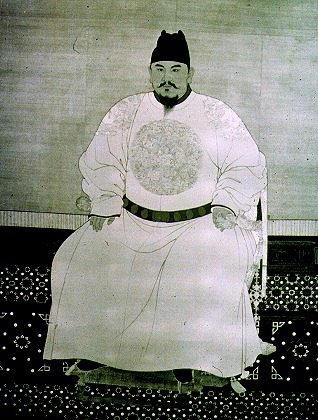
The history of China is told in traditional historical records that refer as far back as the Three Sovereigns and Five Emperors about 5,000 years ago, supplemented by archaeological records dating to the 16th century BC. China is one of the world's oldest continuous civilizations. Turtle shells with markings reminiscent of ancient Chinese writing from the Shang Dynasty have been carbon dated to around 1500 BC. Chinese civilization originated with city-states in the Yellow River valley.
The yellow river was named that because of the loess that would build up on the bank and down in the earth then it would sink creating a yellowish tint to the water. 221 BC is the commonly accepted year when China became unified under a large kingdom or empire. Successive dynasties in Chinese history developed bureaucratic systems that enabled the Emperor of China to control the large territory.
China was first united by Qin Shi Huang in 221 BC. China alternated between periods of political unity and disunity, occasionally becoming dominated by foreign peoples, most of whom were assimilated into the Chinese population. Cultural and political influences from many parts of Asia, carried by successive waves of immigration, expansion, and assimilation, merged to create Chinese culture.
What is now China was inhabited by Homo erectus more than a million years ago. Recent study shows that the stone tools found at Xiaochangliang site are magnetostratigraphically dated as 1.36 million years ago. The archaeological site of Xihoudu in Shanxi Province is the earliest recorded of use of fire by Homo erectus, which is dated 1.27 million years ago.
The excavations at Yuanmou and later Lantian show early habitation. Perhaps the most famous specimen of Homo erectus found in China is the so-called Peking Man discovered in 1923. Two pottery pieces were unearthed at Liyuzui Cave in Liuzhou, Guangxi Province dated 16,500 and 19,000 BC.
Early evidence for proto-Chinese millet agriculture is carbon-dated to about 7,000 BC, and associated with the Jiahu site (also the site of the earliest playable music instruments). This period also includes the earliest stage of the Chinese written language (still under debate) and the earliest wine production in the world. Jiahu contains the Peiligang culture of Xinzheng county, Henan, of which only 5% has been excavated as of 2006.
With agriculture came increased population, the ability to store and redistribute crops, and to support specialist craftsmen and administrators. In late Neolithic times, the Yellow River valley began to establish itself as a cultural center, where the first villages were founded; the most archaeologically significant of those was found at Banpo, Xi'an.
The early history of China is complicated by the lack of a written language during this period coupled with the existence of documents from later time periods attempting to describe events that occurred several centuries before. The problem in some sense stems from centuries of introspection on the part of the Chinese people which has blurred the distinction between fact and fiction in regards to this early history.
By 7000 BC, the Chinese were farming millet, giving rise to the Jiahu culture. At Damaidi in Ningxia, 3,172 cliff carvings dating to 6,000-5,000 BC have been discovered "featuring 8,453 individual characters such as the sun, moon, stars, gods and scenes of hunting or grazing." These pictographs are reputed to be similar to the earliest characters confirmed to be written Chinese. Later Yangshao culture was superseded by the Longshan culture around 2500 BC. Archaeological sites such as Sanxingdui and Erlitou show evidence of a Bronze Age civilization in China. The earliest bronze knife was found at Majiayao in Gansu and Qinhai province dated 3000 BC.

The earliest comprehensive history of China, the Records of the Grand Historian written by Chinese historiographer Sima Qian in the 2nd century BC, and the Bamboo Annals trace Chinese history from about 2800 BC, with an account of the Three August Ones and the Five Emperors. These rulers were semi-mythical sage-kings and moral exemplars. Tradition regards one of them, the Yellow Emperor, as the ancestor of the Han Chinese people.
Sima Qian says that the system of inherited ruler-ship was established during the Xia Dynasty, and that this model was perpetuated in the recorded Shang and Zhou dynasties. It is during this period of the Three Dynasties that the historical China emerges. Read more
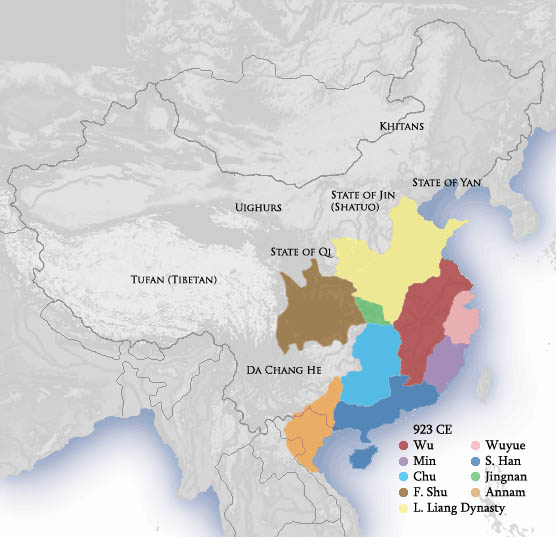
The period of political disunity between the Tang and the Song, known as the Five Dynasties and Ten Kingdoms Period, lasted little more than half a century, from 907 to 960. During this brief era, when China was in all respects a multistate system, five regimes succeeded one another rapidly in control of the old Imperial heartland in northern China. During this same time, 10 more stable regimes occupied sections of southern and western China, so the period is also referred to as that of the Ten Kingdoms. Read more
The Warring States Period was an era in ancient Chinese history characterized by warfare, as well as bureaucratic and military reforms and consolidation. It followed the Spring and Autumn period and concluded with the Qin wars of conquest that saw the annexation of all other contender states, which ultimately led to the Qin state's victory in 221 BC as the first unified Chinese empire, known as the Qin dynasty.
Although different scholars point toward different dates ranging from 481 BC to 403 BC as the true beginning of the Warring States, Sima Qian's choice of 475 BC is the most often cited. The Warring States era also overlaps with the second half of the Eastern Zhou dynasty, though the Chinese sovereign, known as the king of Zhou, ruled merely as a figurehead and served as a backdrop against the machinations of the warring states.
The "Warring States Period" derives its name from the Record of the Warring States, a work compiled early in the Han Dynasty. A HREF="http://en.wikipedia.org/wiki/Warring_States_Period">Read more
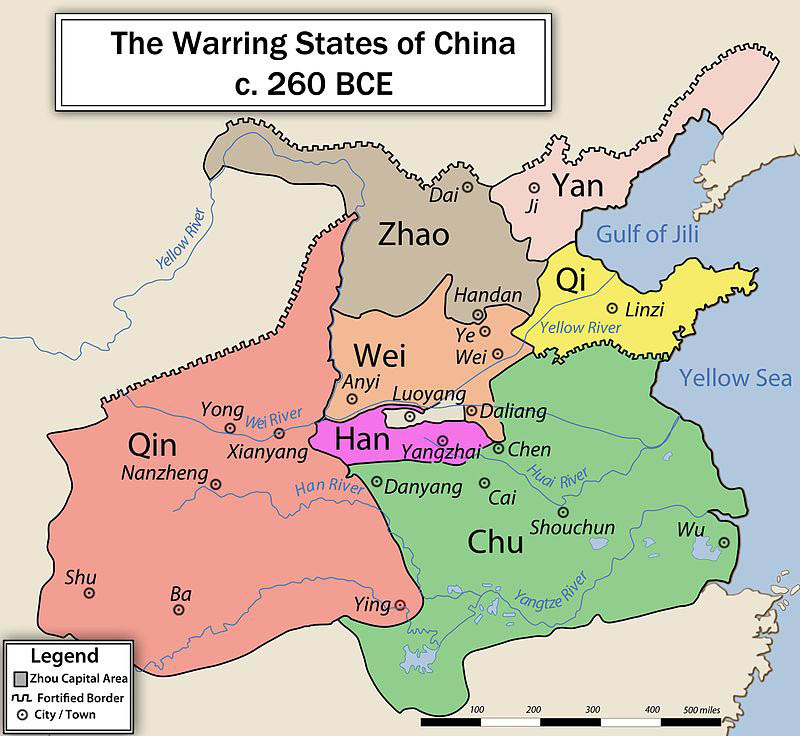

The earliest discovered written record of China's past dates from the Shang Dynasty in perhaps the 13th century BC, and takes the form of inscriptions of divination records on the bones or shells of animals - the so-called oracle bones. Archaeological findings providing evidence for the existence of the Shang Dynasty, c 1600-1046 BC is divided into two sets. The first set, from the earlier Shang period (c 1600-1300 BC) comes from sources at Erligang, Zhengzhou and Shangcheng. The second set, from the later Shang or Yin period, consists of a large body of oracle bone writings. Anyang in modern day Henan has been confirmed as the last of the nine capitals of the Shang (c 1300-1046 BC). The Shang Dynasty featured 31 kings, from Tang of Shang to King Zhou of Shang; it was the longest dynasty in Chinese history.
The Records of the Grand Historian states that the Shang Dynasty moved its capital six times. The final and most important move to Yin in 1350 BC led to the golden age of the dynasty. The term Yin Dynasty has been synonymous with the Shang dynasty in history, although lately it has been used specifically in reference to the latter half of the Shang Dynasty.
Chinese historians living in later periods were accustomed to the notion of one dynasty succeeding another, but the actual political situation in early China is known to have been much more complicated. Hence, as some scholars of China suggest, the Xia and the Shang can possibly refer to political entities that existed concurrently, just as the early Zhou (successor state of the Shang), is known to have existed at the same time as the Shang.
Written records found at Anyang confirm the existence of the Shang dynasty. However, Western scholars are often hesitant to associate settlements contemporaneous with the Anyang settlement with the Shang dynasty. For example, archaeological findings at Sanxingdui suggest a technologically advanced civilization culturally unlike Anyang. The evidence is inconclusive in proving how far the Shang realm extended from Anyang. The leading hypothesis is that Anyang, ruled by the same Shang in the official history, coexisted and traded with numerous other culturally diverse settlements in the area that is now referred to as China proper.
Complete Bronze Age town with elite tombs discovered in northern China Live Science - July 1, 2023
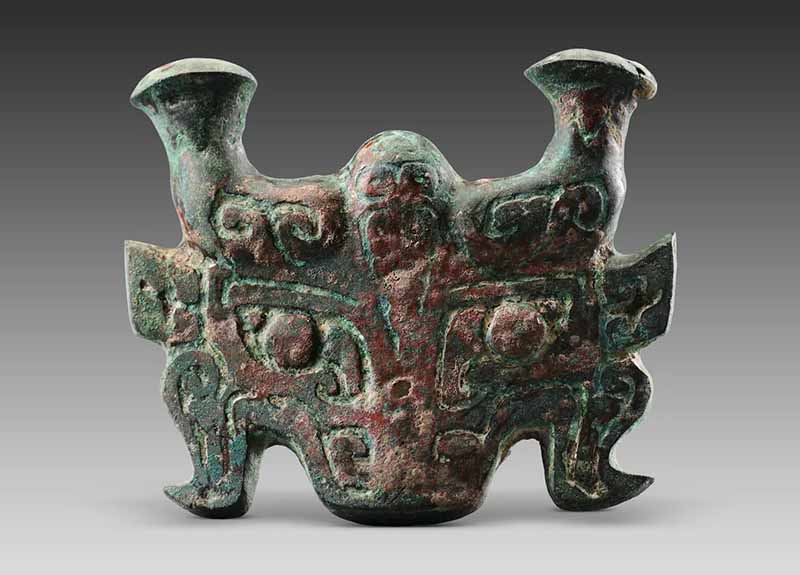
The site is one of the largest ever discovered dating from China's early Shang Dynasty.
The Xia was a Chinese dynasty that followed the Shang dynasty and preceded the Qin dynasty. The Zhou dynasty lasted longer than any other dynasty in Chinese history (790 years). The military control of China by the royal house, surnamed Ji, lasted initially from 1046 until 771 BC for a period known as the Western Zhou, and the political sphere of influence it created continued well into the Eastern Zhou period for another 500 years.
During the Zhou dynasty, centralized power decreased throughout the Spring and Autumn period until the Warring States period in the last two centuries of the dynasty. In the latter period, the Zhou court had little control over its constituent states that were at war with each other until the Qin state consolidated power and formed the Qin dynasty in 221 BC. The Zhou dynasty had formally collapsed only 35 years earlier, although the dynasty had only nominal power at that point.
This period of Chinese history produced what many consider the zenith of Chinese bronzeware making.[5] The latter period of the Zhou dynasty is also famous for the beginnings of three major Chinese philosophies: Confucianism, Taoism and Legalism. The Zhou dynasty also spans the period in which the written script evolved from the oracle script and bronze script into the seal script, and then finally into an almost-modern form with the use of an archaic clerical script that emerged during the late Warring States period. Read more
The Zhou Dynasty followed the Shang dynasty and preceded the Qin dynasty. The Zhou dynasty lasted longer than any other dynasty in Chinese history (790 years). The military control of China by the royal house, surnamed Ji, lasted initially from 1046 until 771 BC for a period known as the Western Zhou, and the political sphere of influence it created continued well into the Eastern Zhou period for another 500 years.
During the Zhou dynasty, centralized power decreased throughout the Spring and Autumn period until the Warring States period in the last two centuries of the dynasty. In the latter period, the Zhou court had little control over its constituent states that were at war with each other until the Qin state consolidated power and formed the Qin dynasty in 221 BC. The Zhou dynasty had formally collapsed only 35 years earlier, although the dynasty had only nominal power at that point.
This period of Chinese history produced what many consider the zenith of Chinese bronzeware making. The latter period of the Zhou dynasty is also famous for the beginnings of three major Chinese philosophies: Confucianism, Taoism and Legalism. The Zhou dynasty also spans the period in which the written script evolved from the oracle script and bronze script into the seal script, and then finally into an almost-modern form with the use of an archaic clerical script that emerged during the late Warring States period. Read more
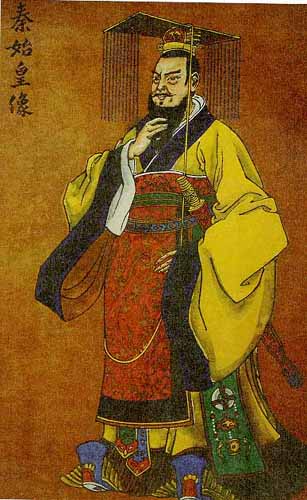
First Emperor - Qin Shi Huang Di
Historians often refer to the period from Qin Dynasty to the end of Qing Dynasty as Imperial China. Though the unified reign of the Qin Emperor lasted only twelve years, he managed to subdue great parts of what constitutes the core of the Han Chinese homeland and to unite them under a tightly centralized Legalist government seated at Xianyan (in modern Xi'an).
The doctrine of legalism that guided the Qin emphasized strict adherence to a legal code and the absolute power of the emperor. This philosophy of Legalism, while effective for expanding the empire in a military fashion, proved unworkable for governing it in peace time. The Qin presided over the brutal silencing of political opposition, including the event known as the burning and burying of scholars. This would be the impetus behind the later Han Synthesis incorporating the more moderate schools of political governance.
The Qin Dynasty is well known for beginning the Great Wall of China, which was later augmented and enhanced during the Ming Dynasty. The other major contributions of the Qin included the concept of centralized government, the unification of the legal code, written language, measurement, and currency of China after the tribulations of the Spring and Autumn and Warring States Periods. Even something as basic as the length of axles for carts had to be made uniform to ensure a viable trading system throughout the empire.

Founder of the Han Dynasty
The Han Dynasty emerged in 206 BC. It was the first dynasty to embrace the philosophy of Confucianism, which became the ideological underpinning of all regimes until the end of imperial China. Under the Han Dynasty, China made great advances in many areas of the arts and sciences. Emperor Wu Han Wudi consolidated and extended the Chinese empire by pushing back the Xiongnu (sometimes identified with the Huns) into the steppes of modern Inner Mongolia, wresting from them the modern areas of Gansu, Ningxia and Qinghai. This enabled the first opening of trading connections between China and the West, the Silk Road.
Nevertheless, land acquisitions by elite families gradually drained the tax base. In AD 9, the usurper Wang Mang founded the short-lived Xin ("New") Dynasty and started an extensive program of land and other economic reforms. These programs, however, were never supported by the land-holding families, for they favored the peasant and lesser gentry, and the instability they produced brought on chaos and uprisings.
Emperor Guangwu reinstated the Han Dynasty with the support of land-holding and merchant families at Luoyang, east of Xi'an. This new era would be termed the Eastern Han Dynasty. Han power declined again amidst land acquisitions, invasions, and feuding between consort clans and eunuchs.
The Yellow Turban Rebellion broke out in 184, ushering in an era of warlords. In the ensuing turmoil, three states tried to gain predominance in the Period of the Three Kingdoms. This time period has been greatly romanticized in works such as Romance of the Three Kingdoms. Read more
Though the three kingdoms were reunited temporarily in 278 by the Jin Dynasty, the contemporary non-Han Chinese (Wu Hu) ethnic groups controlled much of the country in the early 4th century and provoked large-scale Han Chinese migrations to south of the Chang Jiang. In 303 the Di people rebelled and later captured Chengdu, establishing the state of Cheng Han. Under Liu Yuan the Xiongnu rebelled near today's Linfen County and established the state of Han Zhao.
His successor Liu Cong captured and executed the last two Western Jin emperors. Sixteen kingdoms were a plethora of short-lived non-Chinese dynasties that came to rule the whole or parts of northern China in the 4th and 5th centuries. Many ethnic groups were involved--including ancestors of the Turks, Mongolians, and Tibetans. Most of these nomadic peoples had to some extent been "Sinicized" long before their ascent to power. In fact, some of them, notably the Ch'iang and the Xiong-nu, had already been allowed to live in the frontier regions within the Great Wall since late Han times. Read more
Signaled by the collapse of East Jin Dynasty in 420, China entered the era of the Southern and Northern Dynasties. The Han people managed to survive the military attacks from the nomadic tribes of the north, such as the Xian Bei, and their civilization continued to thrive.
An increasing number of nomadic people in Northern China adopted Confucianism as personal life guidance and state ideology while becoming gradually assimilated into the Han Chinese civilization. During this rivalry between Northern and Southern China, Buddhism propagated throughout China for the first time, despite facing opposition from Taoist followers. Tuo Ba Tao a faithful Taoist believer and emperor of the Northern Wei Dynasty (one of the Northern Dynasties), issued orders to eliminate Buddhism from the country.
In Southern China, fierce debates about whether Buddhism should be allowed to exist were held frequently by the royal court and nobles. Finally, near the end of the Southern and Northern Dynasties era, both Buddhist and Taoist followers compromised and became more tolerant of each other.
In 589, Sui annexed the last Southern Dynasty, Chen, through military force, and put an end to the era of Southern and Northern Dynasties. Read More
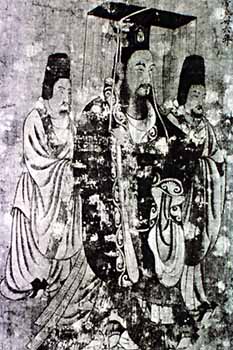
Emperor Wen Founder of the Sui Dynasty
The Sui Dynasty was a short-lived imperial dynasty of China of pivotal significance. The Sui unified the Northern and Southern dynasties and reinstalled the rule of ethnic Han in the entirety of China proper, along with sinicization of former nomadic ethnic minorities (Five Barbarians) within its territory. It was succeeded by the Tang dynasty, which largely inherited its foundation.
Founded by Emperor Wen of Sui, the Sui dynasty capital was Chang'an (which was renamed Daxing, modern Xi'an, Shaanxi) from 581-605 and later Luoyang (605-618). Emperors Wen and his successor Yang undertook various centralized reforms, most notably the equal-field system, intended to reduce economic inequality and improve agricultural productivity; the institution of the Five Departments and Six Board system, which is a predecessor of Three Departments and Six Ministries system; and the standardization and re-unification of the coinage. They also spread and encouraged Buddhism throughout the empire. By the middle of the dynasty, the newly unified empire entered a golden age of prosperity with vast agricultural surplus that supported rapid population growth.
A lasting legacy of the Sui dynasty was the Grand Canal. With the eastern capital Luoyang at the center of the network, it linked the west-lying capital Chang'an to the economic and agricultural centers of the east towards Jiangdu (now Yangzhou, Jiangsu) and Yuhang (now Hangzhou, Zhejiang), and to the northern border near modern Beijing. While the pressing initial motives were for shipment of grains to the capital, transporting troops, and military logistics, the reliable inland shipment links would facilitate domestic trade, flow of people and cultural exchange for centuries. Along with the extension of the Great Wall, and the construction of the eastern capital city of Luoyang, these mega projects, led by an efficient centralized bureaucracy, would amass millions of conscripted workers from the large population base, at heavy cost of human lives.
After a series of costly and disastrous military campaigns against Goguryeo, one of the Three Kingdoms of Korea, ended in defeat by 614, the dynasty disintegrated under a series of popular revolts culminating in the assassination of Emperor Yang by his minister, Yuwen Huaji in 618. The dynasty, which lasted only thirty-seven years, was undermined by ambitious wars and construction projects, which overstretched its resources. Particularly, under Emperor Yang, heavy taxation and compulsory labor duties would eventually induce widespread revolts and brief civil war following the fall of the dynasty.
The dynasty is often compared to the earlier Qin dynasty for unifying China after prolonged division. Wide-ranging reforms and construction projects were undertaken to consolidate the newly unified state, with long-lasting influences beyond their short dynastic reigns. Read More

Founder of the Tang Dynasty
The Tang Dynasty or Tang Empire, was an imperial dynasty of China that ruled from 618 to 907, with an interregnum between 690 and 705. It was preceded by the Sui dynasty and followed by the Five Dynasties and Ten Kingdoms period. Historians generally regard the Tang as a high point in Chinese civilization, and a golden age of cosmopolitan culture. Tang territory, acquired through the military campaigns of its early rulers, rivaled that of the Han dynasty.
The Li Family founded the dynasty, seizing power during the decline and collapse of the Sui Empire and inaugurating a period of progress and stability in the first half of the dynasty's rule. The dynasty was formally interrupted during 690-705 when Empress Wu Zetian seized the throne, proclaiming the Wu Zhou dynasty and becoming the only legitimate Chinese empress regnant. The devastating An Lushan Rebellion (755Ð763) shook the nation and led to the decline of central authority in the dynasty's latter half.
Like the previous Sui dynasty, the Tang maintained a civil-service system by recruiting scholar-officials through standardized examinations and recommendations to office. The rise of regional military governors known as jiedushi during the 9th century undermined this civil order. The dynasty and central government went into decline by the latter half of the 9th century; agrarian rebellions resulted in mass population loss and displacement, widespread poverty, and further government dysfunction that ultimately ended the dynasty in 907.
The Tang capital at Chang'an (present-day Xi'an) was then the world's most populous city. Two censuses of the 7th and 8th centuries estimated the empire's population at about 50 million people, which grew to an estimated 80 million by the dynasty's end.[10][11][b] From its numerous subjects, the dynasty raised professional and conscripted armies of hundreds of thousands of troops to contend with nomadic powers for control of Inner Asia and the lucrative trade-routes along the Silk Road. Far-flung kingdoms and states paid tribute to the Tang court, while the Tang also indirectly controlled several regions through a protectorate system. The adoption of the title Khan of Heaven by the Tang emperor Taizong was eastern Asia's first "simultaneous kingship". In addition to its political hegemony, the Tang exerted a powerful cultural influence over neighboring East Asian nations such as Japan and Korea.
Chinese culture flourished and further matured during the Tang era. It is traditionally considered the greatest age for Chinese poetry.[13] Two of China's most famous poets, Li Bai and Du Fu, belonged to this age, as did many famous painters such as Han Gan, Zhang Xuan, and Zhou Fang. Tang scholars compiled a rich variety of historical literature, as well as encyclopedias and geographical works. Notable innovations included the development of woodblock printing. Buddhism became a major influence in Chinese culture, with native Chinese sects gaining prominence. However, in the 840s Emperor Wuzong enacted policies to suppress Buddhism, which subsequently declined in influence. Read more
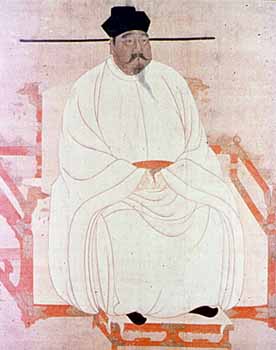
Founder of the Song Dynasty
In 960, the Song Dynasty (960-1279) gained power over most of China and established its capital in Kaifeng, starting a period of economic prosperity, while the Khitan Liao Dynasty ruled over Manchuria and eastern Mongolia.
In 1115 the Jurchen Jin Dynasty (1115-1234) emerged to prominence, annihilating the Liao Dynasty in 10 years. Meanwhile, in what are now the northwestern Chinese provinces of Gansu, Shaanxi, and Ningxia, there emerged a Western Xia Dynasty from 1032 up to 1227, established by Tangut tribes.
It also took power over northern China and Kaifeng from the Song Dynasty, which moved its capital to Hangzhou. The Southern Song Dynasty also suffered the humiliation of having to acknowledge the Jin Dynasty as formal overlords. In the ensuing years China was divided between the Song Dynasty, the Jin Dynasty and the Tangut Western Xia. Southern Song experienced a period of great technological development which can be explained in part by the military pressure that it felt from the north. This included the use of gunpowder weapons, which played a large role in the Song Dynasty naval victories against the Jin in the Battle of Tangdao and Battle of Caishi on the Yangtze River in 1161 AD. Furthermore, China's first permanent standing navy was assembled and provided an admiral's office at Dinghai in 1132 AD, under the reign of Emperor Renzong of Song.
The Song Dynasty is considered by many to be classical China's high point in science and technology, with innovative figures such as Su Song (1020-1101 AD) and Shen Kuo (1031-1095 AD). There was court intrigue with the political rivals of the Reformers and Conservatives, led by the chancellors Wang Anshi and Sima Guang, respectively.
By the mid to late 13th century the Chinese had adopted the dogma of Neo-Confucian philosophy formulated by Zhu Xi. There were enormous literary works compiled during the Song Dynasty, such as the historical work of the Zizhi Tongjian. Culture and the arts flourished, with grandiose artworks such as Along the River During Qingming Festival and Eighteen Songs of a Nomad Flute, while there were great Buddhist painters such as Lin Tinggui. Read more
Genghis Khan as the founder and first Great Khan (Emperor) of the Mongol Empire, which became the largest contiguous empire in history after his death. He came to power by uniting many of the nomadic tribes of Northeast Asia, and, after being proclaimed the universal ruler of the Mongols, or Genghis Khan, he launched the Mongol invasions, which ultimately conquered most of Eurasia, reaching as far west as Poland and as far south as Egypt. His major campaigns include those against the Qara Khitai, Khwarezmia, and the Western Xia and Jin dynasties, and raids into medieval Georgia, the Kievan Rus', and Volga Bulgaria.
Genghis Khan's conquests as wholesale destruction on an unprecedented scale, causing great demographic changes and a drastic decline of population as a result of mass exterminations and famine. A conservative estimate amounts to about four million civilians (whereas other figures range from forty to sixty million) who lost their lives as a consequence of Genghis Khan's military campaigns. In contrast, Buddhist Uyghurs of the kingdom of Qocho, who willingly left the Qara Khitai empire to become Mongol vassals, viewed him as a liberator. Genghis Khan was also portrayed positively by early Renaissance sources out of respect for the great spread of culture, technology and ideas under the Mongol Empire.
By the end of the Great Khan's life, the Mongol Empire occupied a substantial portion of Central Asia and China. Due to his exceptional military successes, Genghis Khan is often considered to be one of the greatest conquerors of all time.
Beyond his military accomplishments, Genghis Khan also advanced the Mongol Empire in other ways. He decreed the adoption of the Uyghur script as the Mongol Empire's writing system. He also practiced meritocracy and encouraged religious tolerance in the Mongol Empire, unifying the nomadic tribes of Northeast Asia.
Present-day Mongolians regard him as the founding father of Mongolia. He is also credited with bringing the Silk Road under one cohesive political environment. This brought relatively easy communication and trade between Northeast Asia, Muslim Southwest Asia, and Christian Europe, expanding the cultural horizons of all three areas. Read more
Kublai was the fourth son of Tolui (his second son with Sorghaghtani Beki) and a grandson of Genghis Khan. He was almost 12 years of age when Genghis Khan died and had succeeded his older brother Mšngke as Khagan in 1260, but had to defeat his younger brother Ariq Bške in the Toluid Civil War lasting until 1264. This episode marked the beginning of the fragmentation of the empire.[2] Kublai's real power was limited to the Yuan Empire, even though as Khagan he still had influence in the Ilkhanate and, to a significantly lesser degree, in the Golden Horde. If one considers the Mongol Empire at that time as a whole, his realm reached from the Pacific Ocean to the Black Sea, from Siberia to what is now Afghanistan.
In 1271, Kublai established the Yuan dynasty, which ruled over present-day China, Mongolia, Korea, and some adjacent areas; he also amassed influence in the Middle East and Europe as a Khagan. He assumed the role of Emperor of China. By 1279, the Mongol conquest of the Song dynasty was completed and Kublai became the first non-Han emperor to unite all of China proper.
The imperial portrait of Kublai was part of an album of the portraits of Yuan emperors and empresses, now in the collection of the National Palace Museum in Taipei. White, the color of the imperial costume of Kublai, was the imperial color of the Yuan dynasty. Read more
Founder of the Ming Dynasty
Throughout a short-lived Yuan Dynasty, there was strong sentiment, among the populace, against the rule of the foreigners, which finally led to peasant revolts. The Mongolians were pushed back to the steppes and replaced by the Ming Dynasty in 1368.
Urbanization increased as the population grew and as the division of labor grew more complex. Large urban centers, such as Nanjing and Beijing, also contributed to the growth of private industry. In particular, small-scale industries grew up, often specializing in paper, silk, cotton, and porcelain goods. For the most part, however, relatively small urban centers with markets proliferated around the country. Town markets mainly traded food, with some necessary manufactures such as pins or oil.
Despite the xenophobia and intellectual introspection characteristic of the increasingly popular new school of neo-Confucianism, China under the early Ming Dynasty was not isolated. Foreign trade and other contacts with the outside world, particularly Japan, increased considerably. Chinese merchants explored all of the Indian Ocean, reaching East Africa with the voyages of Zheng He, original name Ma Sanbao.
Zhu Yuanzhang or (Hong-wu,), the founder of the dynasty, laid the foundations for a state interested less in commerce and more in extracting revenues from the agricultural sector. Perhaps because of the Emperor's background as a peasant, the Ming economic system emphasized agriculture, unlike that of the Song and the Mongolian Dynasties, which relied on traders and merchants for revenue. Neo-feudal landholdings of the Song and Mongol periods were expropriated by the Ming rulers. Great landed estates were confiscated by the government, fragmented, and rented out. Private slavery was forbidden. Consequently, after the death of Emperor Yong-le, independent peasant landholders predominated in Chinese agriculture. These laws might have paved the way to removing the worst of the poverty during the previous regimes. The laws against the merchants and the restrictions under which the craftsmen worked remained essentially as they had been under the Song, but now the remnants of the older foreign merchant class also fell under these new Ming laws. Their influence quickly dwindled.
The dynasty had a strong and complex central government that unified and controlled the empire. The emperor's role became more autocratic, although Zhu Yuanzhang necessarily continued to use what he called the "Grand Secretaries" to assist with the immense paperwork of the bureaucracy, including memorials (petitions and recommendations to the throne), imperial edicts in reply, reports of various kinds, and tax records. It was this same bureaucracy that later prevented the Ming government from being able to adapt to changes in society, and eventually led to its decline.
Emperor Yong-le strenuously tried to extend China's influence beyond its borders by demanding other rulers send ambassadors to China to present tribute. A large navy was built, including four-masted ships displacing 1,500 tons. A standing army of 1 million troops (some estimate as many as 1.9 million) was created. The Chinese armies conquered Annam while the Chinese fleet sailed the China seas and the Indian Ocean, cruising as far as the east coast of Africa. The Chinese gained influence in Eastern Turkestan.
Several maritime Asian nations sent envoys with tribute for the Chinese emperor. Domestically, the Grand Canal was expanded, and proved to be a stimulus to domestic trade. Over 100,000 tons of iron per year were produced. Many books were printed using movable type. The imperial palace in Beijing's Forbidden City reached its current splendor. The Ming period seems to have been one of China's most prosperous. It was also during these centuries that the potential of south China came to be fully exploited. New crops were widely cultivated and industries such as those producing porcelain and textiles flourished. However, it was also during this period that China fell substantially behind Europe in technological and military power, an event known as the "Great Divergence."
During the Ming dynasty the last construction on the Great Wall was undertaken to protect China from foreign invasions. While the Great Wall had been built in earlier times, most of what is seen today was either built or repaired by the Ming. The brick and granite work was enlarged, the watch towers were redesigned, and cannons were placed along its length. Read More
The Qing Dynasty (1644-1911) was founded after the defeat of the Ming, the last Han Chinese dynasty, by the Manchus. The Manchus were formerly known as the Jurchen and invaded from the north in the late seventeenth century. An estimated 25 million people died during the Manchu conquest of Ming Dynasty (1616-1644). Even though the Manchus started out as alien conquerors, they quickly adopted the Confucian norms of traditional Chinese government. They eventually ruled in the manner of traditional native dynasties.
The Manchus enforced a 'queue order' forcing the Han Chinese to adopt the Manchu queue and Manchu-style clothing. The Manchus had a special hair style: the "queue". They cut hair off the front of their heads and made the remaining hair into a long pigtail. The traditional Chinese clothing, or Hanfu was also replaced by Manchu-style clothing. Qipao (bannermen dress and Tangzhuang), usually regarded as traditional Chinese clothing nowadays, are actually Manchu-style clothing. The penalty for not complying was death.
Emperor Kangxi ordered the creation of the most complete dictionary of Chinese characters ever put together at the time. Under Emperor Qianlong, the compilation of a catalogue of the important works on Chinese culture was made.
The Manchus set up the "Eight Banners" system in an attempt to avoid being assimilated into Chinese society. The "Eight Banners" were military institutions, set up to provide a structure with which the Manchu "bannermen" were meant to identify. Banner membership was to be based on traditional Manchu skills such as archery, horsemanship, and frugality. In addition, they were encouraged to use the Manchu language, rather than Chinese. Bannermen were given economic and legal privileges in Chinese cities.
Over the next half-century, the Manchus consolidated control of some areas originally under the Ming, including Yunnan. They also stretched their sphere of influence over Xinjiang, Tibet and Mongolia.
During the nineteenth century, Qing control weakened. China suffered massive social strife, economic stagnation, and increased Western involvement including the destructive trade in opium and the new influence of missionary work. Britain's desire to continue its opium trade with China collided with imperial edicts prohibiting the addictive drug, and the First Opium War erupted in 1840. Britain and other Western powers, including the United States, France, Russia, and Germany thereupon forcibly occupied "concessions" and gained special commercial privileges. Hong Kong was ceded to Britain in 1842 under the Treaty of Nanjing . The Taiping Rebellion (1851-1864) was the largest civil war in China.
In addition, more costly rebellions in terms of human lives and economics followed the Taiping Rebellion such as the Punti-Hakka Clan Wars, Nien Rebellion, Muslim Rebellion, Panthay Rebellion and the Boxer Rebellion. In many ways, the rebellions and the treaties the Qing were forced to sign with the imperialist powers are symptomatic of the inability of the Chinese government to respond adequately to the challenging conditions facing China in the nineteenth century. Read more
The two Opium wars and the opium trade were costly outcomes for the Qing dynasty and the Chinese people. The Qing imperial treasury was declared bankrupt twice arising from indemnities incurred in the Opium wars and the large outflow of silver due to the opium trade (in tens of billions of ounces). China suffered two extreme famines exactly twenty years after each opium war in the 1860s and 1880s, and the Qing imperial dynasty was ineffective in helping the population. Socially these events had a profound impact as it challenged the hegemony that the Chinese had enjoyed in Asia for centuries. As a result, the country was in a state of turmoil.
A large rebellion, the Taiping Rebellion, involved around a third of China falling under control of the Taiping Tianguo, a quasi-Christian religious movement led by the "Heavenly King" Hong Xiuquan. Only after fourteen years were the Taipings finally crushed - the Taiping army was destroyed in the Third Battle of Nanking in 1864. In total between twenty million and fifty million lives were lost, making it the second deadliest war in human history.
The Qing officials were slow to adopt modernity and suspicious of social and technological advances that they viewed as a threat to their absolute control over China. Therefore, the dynasty was ill-equipped to handle the Western encroachment. Western powers did intervene militarily to quell domestic chaos, such as the Taiping Rebellion and the anti-imperialist Boxer Rebellion. General Gordon, later killed in the siege of Khartoum, Sudan, was often credited with having involved to help the Qing dynasty to defeat the Taiping insurrection.
By the 1860s, the Qing Dynasty had put down the rebellions at enormous cost and loss of life. This undermined the credibility of the Qing regime and, spearheaded by local initiatives by provincial leaders and gentry, contributed to the rise of warlordism in China.
The Qing Dynasty under the Emperor Guangxu proceeded to deal with the problem of modernization through the Self-Strengthening Movemen.
However, between 1898 and 1908 the Empress Dowager Cixi had the reformist Guangxu imprisoned for being 'mentally disabled'. The Empress Dowager with the help of conservatives, initiated a military coup, effectively removed the young Emperor from power, and overturned most of the more radical reforms. He died one day before the death of the Empress Dowager (some believe Guangxu was poisoned by Cixi). Official corruption, cynicism, and imperial family quarrels made most of the military reforms useless. As a result, the Qing's "New Armies" were soundly defeated in the Sino-French War (1883-1885) and the Sino-Japanese War (1894-1895).
At the start of the 20th century, the Boxer Rebellion threatened northern China. This was a conservative anti-imperialist movement that sought to return China to old ways. The Empress Dowager, probably seeking to ensure her continued grip on power, sided with the Boxers when they advanced on Beijing. In response the Eight-Nation Alliance invaded China. Consisting of British, Japanese, Russian, Italian, German, French, US and Austrian troops, the alliance defeated the Boxers and demanded further concessions from the Qing government.
Frustrated by the Qing court's resistance to reform and by China's weakness, young officials, military officers, and students - inspired by the revolutionary ideas of Sun Yat-sen - began to advocate the overthrow of the Qing Dynasty and creation of a republic. A revolutionary military uprising, the Wuchang Uprising, began on October 10, 1911 in Wuhan.
The provisional government of the Republic of China was formed in Nanjing on March 12, 1912 with Sun Yat-sen as President, but Sun was forced to turn power over to Yuan Shikai, who commanded the New Army and was Prime Minister under the Qing government, as part of the agreement to let the last Qing monarch abdicate (a decision he would later regret). Yuan Shikai proceeded in the next few years to abolish the national and provincial assemblies and declared himself emperor in 1915. Yuan's imperial ambitions were fiercely opposed by his subordinates, and faced with the prospect of rebellion, Yuan abdicated and died shortly afterwards in 1916, leaving a power vacuum in China. His death left the republican government all but shattered, ushering in the era of the "warlords" when China was ruled by shifting coalitions of competing provincial military leaders.
A little noticed event (to the rest of the world) in 1919 would have long-term repercussions for the rest of Chinese history in the 20th century. This was the May Fourth Movement. This movement began as a response to the insult imposed on China by the Treaty of Versailles ending World War I but became a protest movement about the domestic situation in China. The discrediting of liberal Western philosophy amongst Chinese intellectuals was followed by the adoption of more radical lines of thought. This in turn planted the seeds for the irreconcilable conflict between the left and right in China that would dominate Chinese history for the rest of the century.
In the 1920s, Sun Yat-Sen established a revolutionary base in south China, and set out to unite the fragmented nation. With Soviet assistance, he entered into an alliance with the fledgling Communist Party of China. After Sun's death from cancer in 1925, one of his protŽgŽs, Chiang Kai-shek , seized control of the Kuomintang (Nationalist Party or KMT,) and succeeded in bringing most of south and central China under its rule in a military campaign known as the Northern Expedition. Having defeated the warlords in south and central China by military force, Chiang was able to secure the nominal allegiance of the warlords in the North.
In 1927, Chiang turned on the CPC and relentlessly chased the CPC armies and its leaders from their bases in southern and eastern China. In 1934, driven from their mountain bases such as the Chinese Soviet Republic, the CPC forces embarked on the Long March across China's most desolate terrain to the northwest, where they established a guerrilla base at Yan'an in Shanxi Province.
During the Long March, the communists reorganized under a new leader, Mao Zedong (Mao Tse-tung). The bitter struggle between the KMT and the CPC continued, openly or clandestinely, through the 14-year long Japanese invasion (1931-1945), even though the two parties nominally formed a united front to oppose the Japanese invaders in 1937, during the Sino-Japanese War (1937-1945) portion of World War II. The war between the two parties resumed following the Japanese defeat in 1945. By 1949, the CPC occupied most of the country.
Chiang Kai-shek fled with the remnants of his government to Taiwan in 1949 and his Nationalist Party would control the island as well as a few neighboring islands until democratic elections in the early 1990s. Since then, the political status of Taiwan has always been under dispute. Read more


Kublai Khan (September 23, 1215 - February 18, 1294) also known by his temple name as Emperor Shizu of Yuan, was the fifth khagan-emperor of the Mongol Empire, reigning from 1260 to 1294, although after the division of the empire this was a nominal position. He also founded the Yuan dynasty of China in 1271, and ruled as the first Yuan emperor until his death in 1294.
